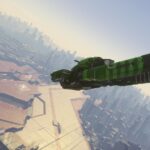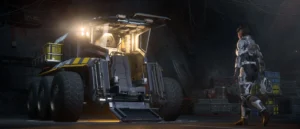When a Door Closes
It’s been two weeks since I started working for a new company and in a new role. One that returns me to a past life in data visualization and analysis. I’m still nested in the Business Intelligence space. However, instead of being a product manager for internal BI solutions, I’m managing a team of analysts and data viz professionals. This aspect of metrics and performance management is what brought me to BI in the first place. Luckily for me, careers in Data Viz and Data Science have grown tremendously over the years. Based on my former experience with the tools that are industry standards, I was able to quickly find a rewarding opportunity within weeks of being notified of my pending layoff. Before the door officially closed, the window on a new job offer was already in hand. I definitely consider myself blessed!
Time to Catch Up!
I was at my previous employer for 8 years doing product management. Five years prior to that, I was entrenched in running a Program Management Office, even though I continued to provide analysis support. That’s a long time to be out of the loop in data viz. I have a bevy of books arriving on the tools of the trade and principles so I can catch up with my peers. As someone who learns by doing, I started fishing around for a practice project and landed on combining it with my favorite pastime, gaming. So it should come as no surprise that I went looking for something Star Citizen related.
Viola! Star Systems Meet Data Visualization
I’m fairly obsessed with the lore behind Star Citizen and the physical universe being built by Cloud Imperium Games. AlysianahsWorld.com features several pages dedicated to disseminating the information contained in the official ARK Starmap into an easier to consume and searchable format. Using formal data visualization tools would allow me to evolve an aspect of the site I continue to use on a regular basis while learning the newest versions of the tools.
An aspect of analysis and reporting, data visualization, is a more graphical representation of information that endeavors tells a story while providing insight. All though we’re likely years away from having all of the planned star systems, I still find the lore and planned physical layouts entertaining to consider. Those of us following the game closely and participating in the alpha will be fully versed in them as they come online. However, those joining after or following more casually, won’t be quite as fluent.
The end goal for this version is to provide PDFs that players can easily download and reference offline at their leisure.
Technical considers were to:
- Present interesting aspects of the universe for discussion.
- Construct a hands-free data-driven solution that feeds from my existing site database.
- Integrate tidbits from my hand-populated lore database.
- Assist causal and new players in navigating the persistent universe via this bird’s-eye view.
Consequently, the order in which I produce them will be impacted by when star systems are placed on the roadmap for introduction into the persistent universe, contain an interesting lore aspect or contribute to a broader topic of conversation. For me, it was essential that this new design be fully automated, with the exception of minor adjustments like moving around annotations if they overlapped or adjusting the scale of the planets being displayed if a system has a lot of items. But that’s it! Everything else is done programmatically and uses data from Aly’s World that already exists.
All things considered, developing this first mock-up/prototype went very well. I was able to achieve all of my objectives while refreshing my skills using the latest version of Tableau, one of the standard tools used in my new position. Now let’s roll into the real topic at hand, Helios.
Helios, 2nd Largest Known Star System
Once I decided that I wanted to evolve how I was presenting the official ARK Starmap data, the question became, where to start? Stanton, while necessary to do, is old hat at this point. The idea of starting there didn’t excite me. Then a question popped into my head that did. What is the largest known star system and what does it contain? Is it somewhere I’ll be spending time? Does it have activity related to any of the player professions I’ve decided to focus on?
The metric I used to quantify a star system’s size was the farthest celestial body from the star in astronomical units (AU). The underlying ARK data has several pieces of information that are not readily visible on RSI, one being the AU. However, I have all of the data already stored in the database that runs AlysianahsWorld.com and I’ve used AU previously to render horizontal star maps for each system.
LINK: Stanton Star System Dossier on Aly’s World
I landed on using the AU of orbiting bodies or areas identified as belonging to a star, as those objects represent the star’s sphere of influence. The size of its influence, if you will. After choosing that as a reasonable representation, all I had to do was find the maximum AU and the star system it belonged to which lead me to Helios.
 LINK: Helios Star System Dossier on Aly’s World
LINK: Helios Star System Dossier on Aly’s World
Perspective
Helios is the second largest known system. The moniker of largest belongs to Tamsa. However, instead of having a star at its center Tamsa contains a black hole. It’s also a fairly empty system which wouldn’t provide much meat for developing this prototype. I will, however, produce a data viz for Tamsa in the near future.
LINK: Tamsa System Dossier on Aly’s World
As the second largest system, how does Helios compare to other star systems we’re more or less familiar with? When I visualized the distribution of all the star system sizes based on the maximum (farthest celestial body in AU), I was surprised by what I saw. I suppose the locations we hear about loom large in our imagination without realizing that frequency has no relevance to how big those areas will be based on the current ARK Starmap metrics. Star systems such as Stanton, Pyro, Nyx, Tera, and Sol are very small in the overall scheme of things.
Here’s a subset, calling out the systems we know and hear about. Stanton, representing the persistent universe today. Pyro, the Jump Point we can see in Stanton now, and likely the next star system that will be introduced to the alpha. And Sol, the birthplace of humanity and a location many of us are interested in seeing CIG’s vision for how it has evolved. As you can see, they’re on the small end of things. Stanton, in particular, is very small!! It’s a bit mind-blowing knowing that the area of Stanton we’re in today is 25% of what it will be since we’re just around Crusader. Even so, it’s going to be nothing in terms of size compared to the other known star systems that have been planned.
How Many Years to Orbit?
Other than the disparity in star system sizes, which I suppose shouldn’t be surprising given that space is a big empty place, is how many years it takes planets to orbit their sun. Talk about thinking that humans and Sol are the centers of the universe. I never contemplated that in Standard Earth Years (SEY) there are planets that take many years to make a full orbit of their star. Tangora, the only planet in Helios that’s openly populated and accessible to civilians takes 210.5 SEY to complete its orbit. My eyes bugged out of my head. It’s a metric I hadn’t bothered to calculate before.
When I see numbers in the thousands, it’s simply mindboggling and makes me wonder how we will communicate the passing of time when humans become an interstellar species. How will calendars work? It’s bad enough dealing with global time zones and keeping those straight at work. I can’t imagine what we’ll devise when a year no longer has the same meaning. Perhaps we will standardize on SEY. I hope to be alive to see how it turns out for myself. Until then, the Star Citizen will have to do.
Helios’ Discovery
Back to Helios, it’s a combination of natural beauty in the face of nature’s ferocity, abandoned junkyards, and military skunkworks. Helios is a Helium Strong type B star that creates powerful solar winds capable of causing havoc with ship sensors. This rarity attracts researchers, tourists and criminals looking for a place to hide, in equal measure.
Helios was discovered in 2509 and in a very unusual manner. An outlawed group called the Daybreak Marauders had discovered a jump point to Helios via Taranis. After robbing convoys in Ellis, they’d race to Taranis and disappear without a trace. After driving the Uros Shipping Concern into bankruptcy due to the activity surrounding these thefts, The Advocacy finally stepped in to bring order to the system. After several months of playing cat-n-mouse, agents eventually discovered Daybreak’s secret.
As is often the case, after it’s official discovery was claimed by the UEE, the region was stripped bare of any important resources and languished in obscurity for several years, beyond being used as a military staging ground.
LINK TO PDF: Helios Visual Star Sys Guide – Legal
The Rest of the Story
My intent is for the Visual Star System Guide to provide the casual overview of the system all on its own. Therefore, I’m not going to regurgitate the information here in text form. Hopefully, the elements I’ve elected to portray, provide a sense of the system’s composition, fun or important things to know, opportunities for activities related to player careers and a high-level assessment for the economy, population, and safety. You can find the official Galactic Guide for Helios on RSI and its associated Loremaker’s Guide on YouTube.
Your thoughts and feedback are welcomed. This being the first iteration of the format, I’d welcome feedback and suggestions. Do remember, that changes must be data-driven as I’m only looking to make minor manual adjustments each time I render the visual for another star system. At regular intervals, I will assemble the visual guides I’ve published in ebook formats for those interested in collecting them as a set. For me, it’s more experimentation with skills that I’ve picked up recently, while was I doing freelance ghostwriting and interior book design this past year or so. No more time or desire to continue doing freelance work with my new position and fun challenges that lay ahead. However, I don’t want what I’ve learned along the way and enjoyed doing, to hit the dustbin so I’ll use those skills in conjunction with this project.
Ta-ta for now,
Aly out.














More Stories
The Genesis of Space Whales
Casual Citizen S2E3 – Birdcage
Casual Citizen S2E2 – Shifting Sands P2